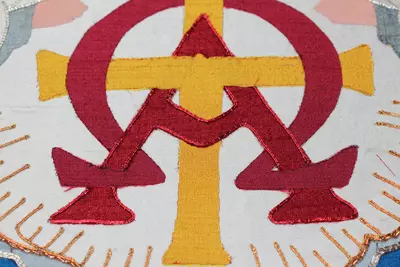
Seeing Red and Starting Over
The Red Cord was used to couch the Red Passing thread. It worked great from the start, for about 3 stitches. Then, as the metallic cord was pulled through the fabric, the cord separated, showing the white core.
Welcome to the world of embroidery! This beautiful art has fascinated people for centuries. In embroidery, you use a needle and thread to stitch patterns onto fabric, creating a variety of decorative items like clothing and home decorations. The great thing about embroidery is that anyone can learn it, regardless of skill level. All you need is a needle, thread, and some fabric, and you’re ready to start! It’s a fun and relaxing activity that you can do alone or with others, and you’ll always have something to be proud of.
Furthermore, if you’re looking for embroidery designs for religious use, Ecclesiastical Sewing is the perfect place to find them. We offer motifs ideal for churches, including crosses, chi-rho symbols, vines, and other religious designs. Whether you’re decorating a church altar or making vestments for a clergy member, Ecclesiastical Sewing has the collection designs for you.
Using embroidery for religious purposes can be fulfilling and essential. People appreciate well-made religious items, so turning your embroidery hobby into a meaningful contribution to religious ceremonies is an excellent idea. You can create religious items that people appreciate and that contribute to religious ceremonies.
Indeed, embroidery is a beautiful and rewarding art form that anyone can learn. Whether you’re looking to create religious items or just want to embroider for fun, Ecclesiastical Sewing has the embroidery designs you need to get started. So grab your needle and thread, and let’s get stitching!

The Red Cord was used to couch the Red Passing thread. It worked great from the start, for about 3 stitches. Then, as the metallic cord was pulled through the fabric, the cord separated, showing the white core.

Using a combination of silver threads and pearls, the design sparked the imagination. The silver threads give the embroidery such a light and delicate look. Couching metallic threads is fairly simple, but some tips and techniques help add that final touch to the stitching.
The Flickr photo stream might give a clue on how Ecclesiastical vestments are prepared for large events when hundreds of chasuble, mitres, dalmatics, and tunics are needed. The Stadelmaier photo stream shows the background of a vestment manufacturer making Ecclesiastical Vestments: from the Vestment Design process to final construction, the photos tell an unknown tale. The photo stream also gives a clue as to how church vestments were made in the past by including a collection of old black-and-white photos.
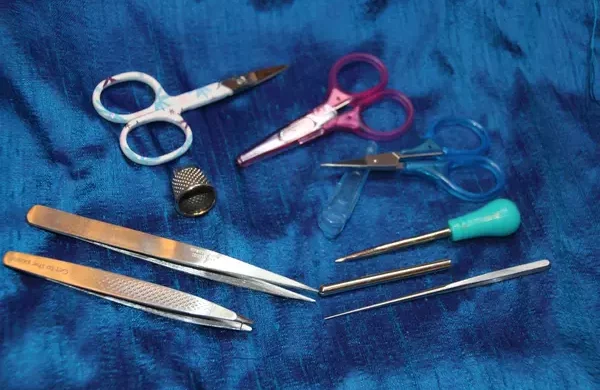
The list of tools for hand embroidery includes Embroidery Scissors, Tweezer, Tailor’s Thimble, awl, laying tool and Mellor.
This is a digital initiative that aims to use social media in a new way – new boards on Pinterest will be added every week, each dedicated to a single object and presenting images that convey technical information.
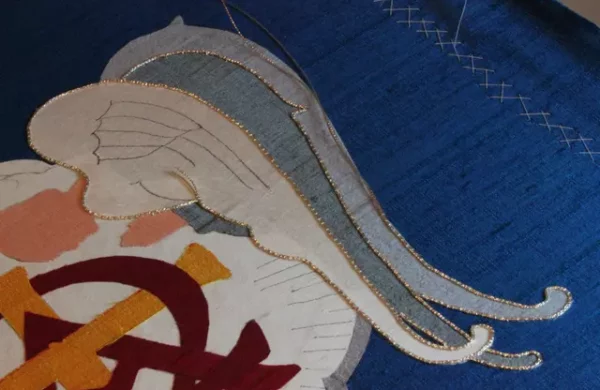
The key to success with a goldwork project is the shimmer of light as it hits and plays off the metallic threads. Adding another color to the mix, in the right proportions is a nice addition that opens up a host of design options. Taking the chance and placing the order for these copper threads has turned on to be a delight.
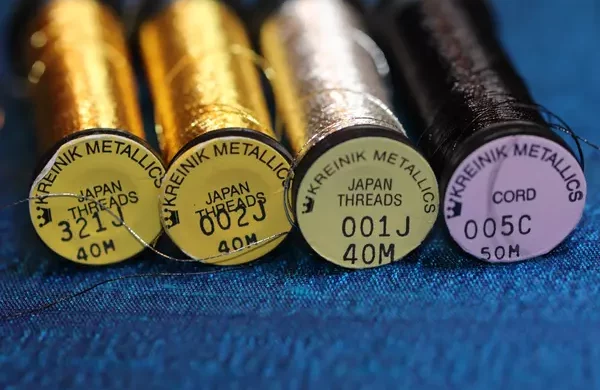
Ecclesiastical Embroidery and Vestment Projects,
– Improving faraway visibility in church embroidery can be tricky. Delicate silver thread on Angel Wings looks nice up close but might fade from a distance. Adding a black outline helps, but it raises concerns about muting the shimmer and blending with the blue background. Deciding between keeping the black for definition or adding more silver threads is a right choice in Ecclesiastical Embroidery.
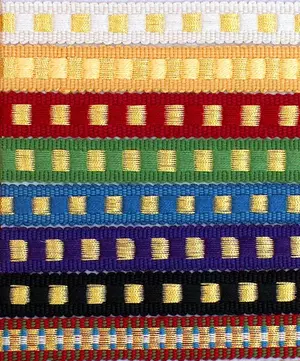
Sharing a vintage church embroidery design from the 1800s, still in the “rough draft” phase and the possibilities for church embroidery design are endless. On option is this versatile design could be used for whitework on altar linens or adapted for silk and gold threads on stole ends or maniples. Placing it in a quatrefoil frame makes it suitable for chasubles or burses. Stretching and elongating for a double oval ring offers options for stoles or chasubles. The design, enhanced with Dice Trim, can also adorn chasubles and dalmatics. The journey of creating ecclesiastical designs is ongoing, offering endless opportunities to learn and explore.

Entering the world of Ecclesiastical Sewing may seem challenging, with fears of intricate designs and historic techniques. However, beauty lies in simplicity, like a humble 1930s hand-embroidered cross. Draw inspiration from vintage patterns, such as Thomas Brown’s Church Embroideries, offering a variety of ideas. For machine embroidery enthusiasts, Windstar Embroidery digitizes Thomas Brown’s designs, providing creativity suggestions for hand embroiderers. Those with artistic talent can create personalized designs, adding a unique touch. To start, consider creating a stole, a beginner-friendly Ecclesiastical Sewing project.
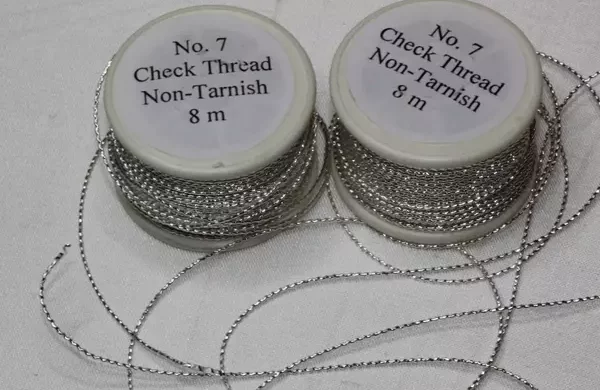
The ongoing Advent Vestment Set faces challenges in couching stitches. The Silver Check Thread, with its non-tarnish finish, offers a sparkle and shine in following curves, holding edges, and concealing stitches. Despite awaiting additional thread supplies, the emphasis remains on completion rather than rushing, with the Ecclesiastical Embroidery project.
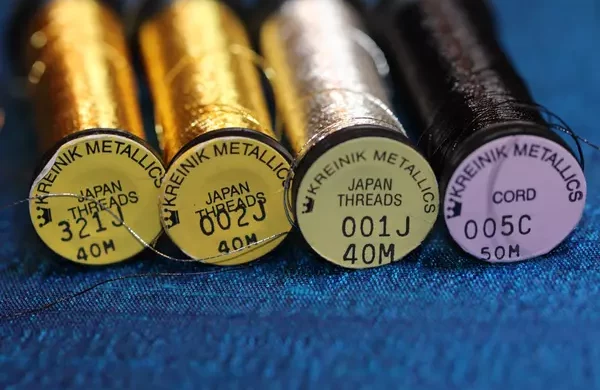
Metallic threads, like Passing Threads and Kreinik Japan Threads, bring shimmer to Ecclesiastical Embroidery. While Passing Threads require careful handling due to their delicate finish, Kreinik Japan Threads offer a shiny, flexible, and affordable option. Despite challenges, the warm copper passing thread adds a contrasting touch. Thoughtful stitching and understanding each thread’s traits enhance the embroidery experience.
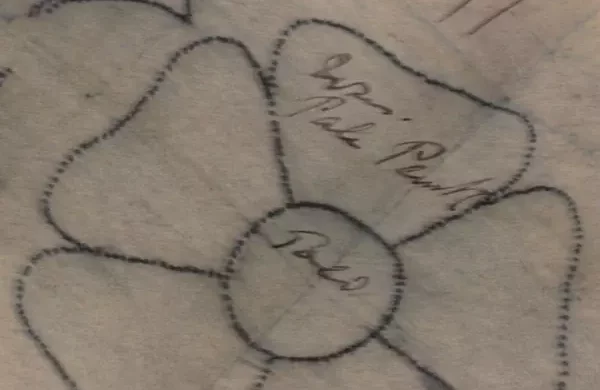
The Monastery’s Ecclesiastical Embroidery Designs are truly amazing. What stands out is that many of these beautiful designs originated from understanding of geometry, design, scale and proportion. The Sisters, who created these designs, studied theology, understood the history and meaning behind symbols, and skillfully combined all this knowledge to create stunning Ecclesiastical Designs.

Passionate about Ecclesiastical Embroidery, I’ve collected rare books and found a rare to find book by Mary Barber entitled Some Drawings of Ancient Embroidery and received three sample designs from a closing monastery’s Art Needlework Department. The designs, featuring a Rose and Thorn, IHC, and Sword and Keys, offer a glimpse into the artistry of Ecclesiastical Embroidery.
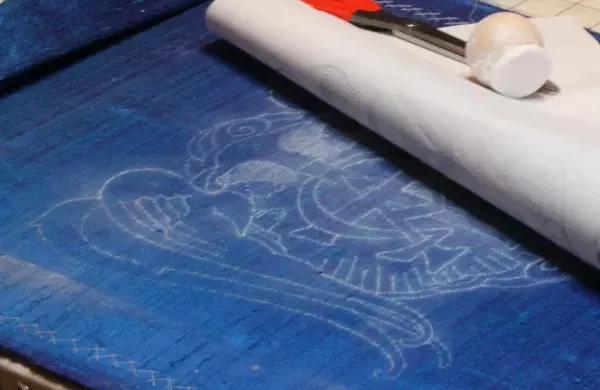
This Advent Vestment set is designed for a shorter lifespan, around 5 to 15 years. The construction process allows for quicker techniques, like using fusible web for the appliqué. Appliqué parts, cut from Silk Dupioni and a cotton/linen blend for the flesh tones, are ironed in place for easy and accurate positioning. The traced design on the blue silk aids in precise placement. While traditional methods may have used homemade paste, the use of fusible web aligns with the project’s practical goals.
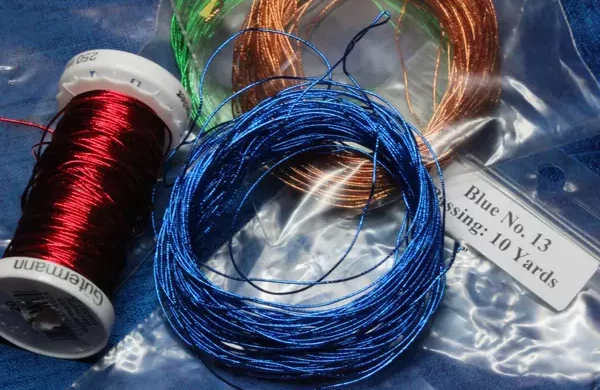
Late at night bits of an Advent Vestment Set come together. Sorting threads, choosing fabrics like Silk Dupioni, broadcloth, and cotton canvas, each piece plays a part. The altar frontal takes shape with careful attention, creating a beautiful and functional piece in Ecclesiastical Sewing.
You must be logged in to post a comment.